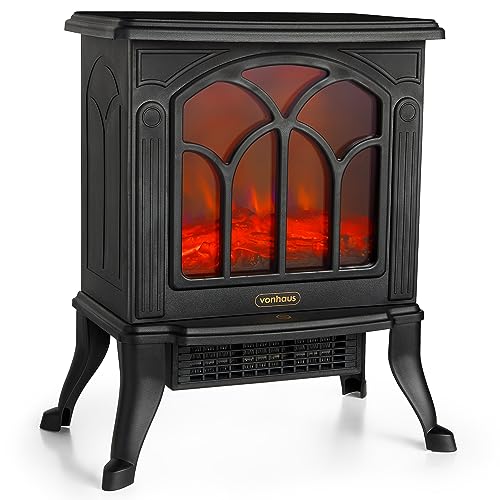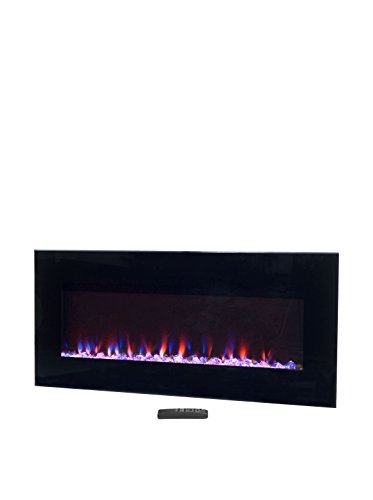Choosing a Fireplace Surround

The perfect surround can add character to your living area regardless of whether you are using it for warmth or to enhance your aesthetics. It isn't easy to select a fireplace surround that is safe and in line with the code.

These custom-built surrounds are built from non-combustible material that adheres to the National Fire Code. They are a great addition to any style home.
Simple Concrete Surround with Marble Slabs
A fireplace surround is a focal point for the room, and can provide warmth and a sense of style. It is made of a variety of materials, and crafted to match a variety of design styles. It is important to think about the style of the room and the budget before deciding on a fireplace surround design.
marble fireplace (
visit site) surrounds provide an elegant look that is compatible with a variety of design styles. They can be combined with rustic woods or more modern metals to create a unique, modern style. Marble is easy to maintain, and can withstand high temperature making it an ideal choice for a surround.
Stone is a classic fireplace surround material that has a timeless appeal and is suitable for many homes. It can be carved and etched to give it a more modern style or left untreated for a more traditional appearance. Stacked stone veneers are another popular option to give texture and depth to the interior of a room.
Granite is a very popular material for modern fireplace surrounds because it's durable and stands up to heat very well. It is also available in a range of patterns and colors, which means it can be used to create various styles of design. Quartzite can also be molded and shaped to fit a modern surround.
If you're a DIYer the installation of a concrete fireplace surround could be within your capabilities. While it may seem daunting but it can be much easier than you imagine if you plan ahead and collaborate with a professional to make sure the structure is sturdy enough.
A professional is also recommended when building a marble fireplace surround because it requires a lot of attention to avoid damage. A skilled carpenter can help you avoid costly errors.
If you're planning on using tile for your fireplace's surround, be sure it's approved for high-temperature use. This information is usually found on the label, or you can ask a staff member at a home improvement shop.
Leaning Frame Surround
The fireplace surround is an essential design element that can change the entire room. It's not just visually pleasing, but also serves a practical function. It shields the wall behind the fire place from deterioration and reflects heat back into the area. It is available in a variety of materials and can be customized for any style or decor.
The right material is crucial to achieve a definite aesthetic. Concrete is a good choice due to its durability, nonflammable and has lots of visual appeal thanks to its natural texture and color. It's usually put into a mold, giving you the ability to create a unique design for your fireplace surround.
Layers are crucial when designing your leaning frames. This will make the frame appear more planned and curated rather than just randomly placed on the shelf or wall. If you plan to display heavy objects like vases or lamps on frames that lean, put a piece of lining for a drawer made of rubber beneath the base. This will stop them from sliding off or damaging surfaces.
If you're using a concrete or marble surround, you might want to consider putting wooden boards on the bottom to help keep it in position. It will also lessen the weight and keep the object from moving as you sip your cup of coffee or wine in the front of your fireplace.
After you have chosen the material, it's time to construct the piece. Draw a line on the wall to indicate the dimensions of your frame. Then, using a saw, cut cleats at each line. Make sure that the top cleat of the shelf is at least a foot shorter.
Then, you can screw the brackets to the wall. Make sure the bolts are inserted through the backer board and then into a wall stud. If necessary, drill the screw holes. Then put the mantel in a clamp that is temporarily on the backer board. Fix the mantel using lag bolts (2-4 bolts per stud). Make sure the bolts are strong and long enough to cover the thickness of the backerboard, plus 2/3 of the mantel's depth.
Black Firebox Surround
Fireplace surrounds play a functional and decorative role. They protect walls from damage caused by heat, deflect some of the heat back into the room, and can make a fireplace an eye-catching feature in a space. The most commonly used materials used for fireplace surrounds are metal and wood. Metal surrounds can be required by the building code to protect nearby combustible materials or they can enhance the look of a fireplace.
The fireplace in this contemporary living area has an all-black firebox with white marble accents. The stone is a higher-end material that requires more care than a mantel made of wood, however it is a striking and striking design element to the space. The black finish also joins with the dark tones of the wood flooring and furniture for an overall design.
While you may associate concrete with sidewalks and driveways, it's actually a very versatile and attractive material for fireplace surrounds. It can be poured on top and formed into any shape, offering the user a variety of design options. This concrete surround has been cut into a curved shape giving it a sleek, modern look that contrasts with the darker tones of the brick floor and wood wall.
Another popular material for fireplace surrounds is wood which is available in a variety of textures and colors to complement any decor scheme. Wooden surrounds can come in any color to match your hearth pad. They are less heavy and cheaper than the masonry surrounds. Most wooden surrounds are designed to hold decorative items for the mantel, like lamps and vases.
Certain wood surrounds have a faceplate that is placed on mantel's top and houses the fireplace doors. This plate can be attached to the mantel using hinges or decorative fasteners that resemble the look of iron.
When selecting a wood mantel or metal fireplace surround, it is important to take into consideration the height of your chimney. Building codes require minimum clearance distances that prevent the spread of fire into the home. The distance will vary based on what type of fireplace you have and also from state state or country country.
Simple Wood Surround
There are many options available for surrounds if you wish to give your fireplace a traditional look. Some surrounds are made of solid oak while others are a combination of materials including stone legs, paired with oak or pine mantels. You can also choose from pine or oak fire surrounds which are designed to be a low-cost and easy choice.
Many people opt to buy pre-made wood fireplace surrounds because it is a cost-effective way to achieve the look they desire without having to hire a carpenter. Certain pre-made pine fireplace surrounds are even available in a range of different finishes to match it to your existing decor.
Another popular style of wood fire surround is one that is hand-crafted from a high quality oak. It can be stained with a light oak color or left untreated to ensure that the natural golden brown of the
fireplaces wood is visible. This
tabletop fireplace surround can be used with gas or wood
fireplaces electric. It comes in two styles: arched or flat.
There are many tutorials available online for those who have more experience with DIY home improvement projects. They can assist you in making your own fireplace surround made of wood. One example is this complete step-by-step tutorial from H2O Bungalow that teaches you how to make a rustic-looking wood surround using pine.
The tutorial will show you how to build the horizontal component of the fireplace surround first, and then how to construct the vertical pilasters or columns that support the mantel. After these are built, you can install the mantel itself. Finally, the tutorial shows you how to attach the crown molding which will fill in any gaps between the cladding and the surrounding wall.
Since a wooden fireplace surround is made of combustible materials, it is important to adhere to the fire codes of your area and keep it at least 6 inches away from the edge of the chimney opening. It is also important to use a non-flammable glue to join the decorative molding, and to ensure that it remains in place when the surround is put in place.

 The perfect surround can add character to your living area regardless of whether you are using it for warmth or to enhance your aesthetics. It isn't easy to select a fireplace surround that is safe and in line with the code.
The perfect surround can add character to your living area regardless of whether you are using it for warmth or to enhance your aesthetics. It isn't easy to select a fireplace surround that is safe and in line with the code. These custom-built surrounds are built from non-combustible material that adheres to the National Fire Code. They are a great addition to any style home.
These custom-built surrounds are built from non-combustible material that adheres to the National Fire Code. They are a great addition to any style home.